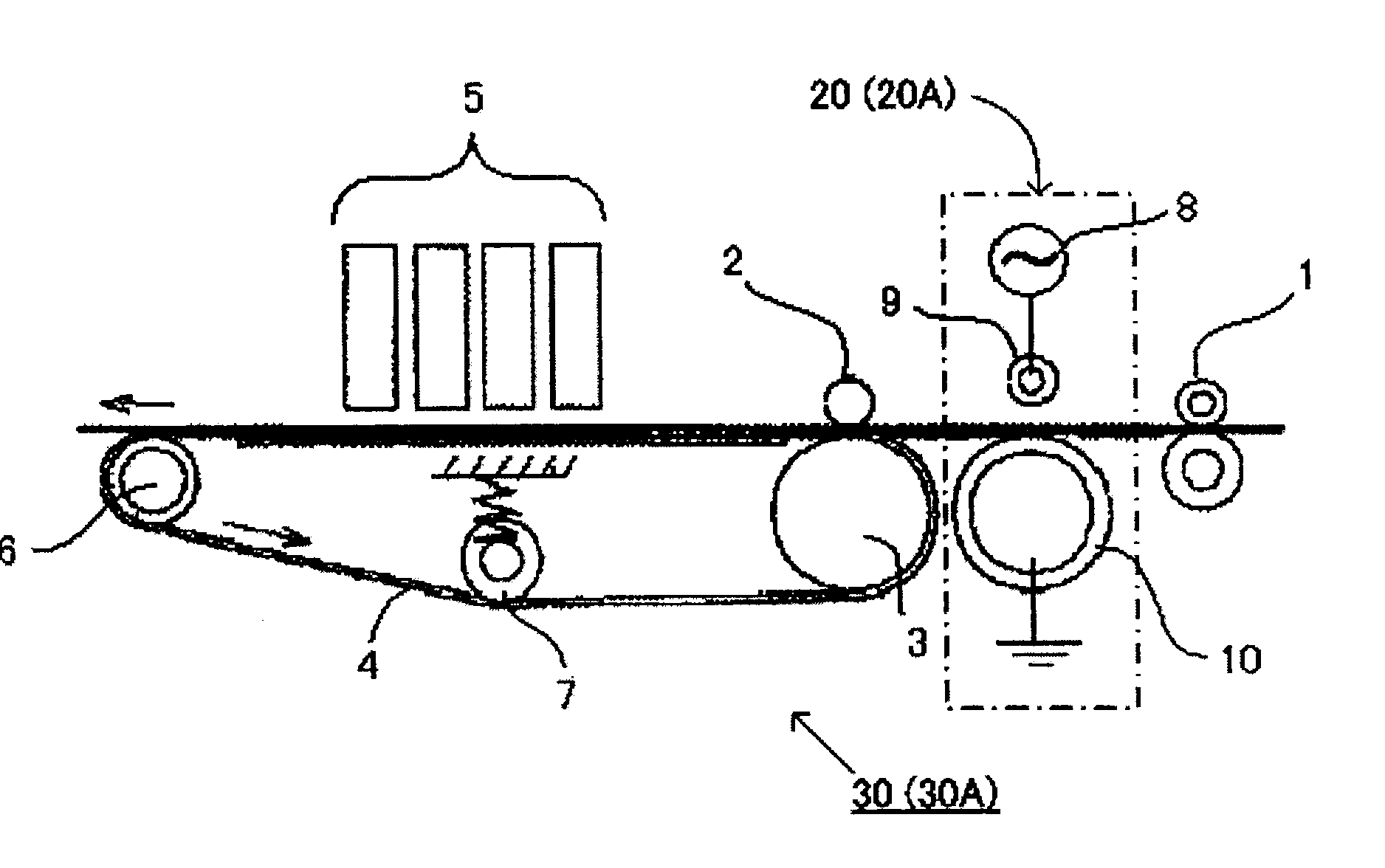Inkjet recording method and inkjet recording apparatus
a recording method and inkjet technology, applied in the direction of inks, duplicating/marking methods, coatings, etc., can solve the problems of undried ink staining of reversal rollers, time-consuming process, and difficult ink penetration into recording medium, etc., to achieve high drying speed and high quality
- Summary
- Abstract
- Description
- Claims
- Application Information
AI Technical Summary
Benefits of technology
Problems solved by technology
Method used
Image
Examples
production example 1
—Preparation of Surface Treated Black Pigment Dispersion—
[0136]To 3,000 mL of 2.5 N sodium sulfate solution, 90 g of a carbon black having a CTAB specific surface area of 150 m2 / g and a DBP oil absorbing amount of 100 mL / 100 g was added, and the mixture was stirred for 10 hours at 60° C. and at 300 rpm for oxidation.
[0137]Thereafter, the reaction mixture was filtered and the obtained carbon black was neutralized with sodium hydroxide solution, followed by ultrafiltration. The resultant carbon black was washed with water and dried, and dispersed into pure water such that a solid content is 20% by mass, whereby the black pigment dispersion of Production Example 1 was yielded.
production example 2
—Preparation of Polymer Solution A—
[0138]In a 1 L flask equipped with a mechanical stirrer, thermometer, nitrogen gas-introducing tube, reflux tube, and dropping funnel, nitrogen gas was passed thoroughly, and then styrene (11.2 g), acrylic acid (2.8 g), laurylmethacrylate (12.0 g), polyethylene glycol methacrylate (4.0 g), styrene macromer (AS-6, produced by Toagosei Co., Ltd.) (4.0 g), and mercaptoethanol (0.4 g) were mixed in the flask, and the mixture was heated to 65° C.
[0139]Then, into the flask, a mixed solution of styrene (100.8 g), acrylic acid (25.2 g), laurylmethacrylate (108.0 g), polyethylene glycol methacrylate (36.0 g), hydroxyethylmethacrylate (60.0 g), styrene macromer (AS-6, produced by Toagosei Co., Ltd.) (36.0 g), mercaptoethanol (3.6 g), azo bismethyl valeronitrile (2.4 g), and methyl ethyl ketone (18 g) was dropped for 2.5 hours.
[0140]After completion of the dropping, a mixed solution of azo bismethyl valeronitrile (0.8 g) and methyl ethyl ketone (18 g) was dro...
production example 3
—Preparation of Copper Phthalocyanine Pigment-Containing Polymer Fine Particle Dispersion—
[0142]A water dispersion of a cyan polymer fine particle was prepared in the same manner as in the Production Example 2 except that C. I. Pigment Red 122 was changed to copper phthalocyanine, and pigment content and solid content were changed to 12% by mass and 20% by mass, respectively.
PUM
| Property | Measurement | Unit |
|---|---|---|
| Percent by mass | aaaaa | aaaaa |
| Percent by mass | aaaaa | aaaaa |
| Percent by mass | aaaaa | aaaaa |
Abstract
Description
Claims
Application Information
 Login to View More
Login to View More - R&D
- Intellectual Property
- Life Sciences
- Materials
- Tech Scout
- Unparalleled Data Quality
- Higher Quality Content
- 60% Fewer Hallucinations
Browse by: Latest US Patents, China's latest patents, Technical Efficacy Thesaurus, Application Domain, Technology Topic, Popular Technical Reports.
© 2025 PatSnap. All rights reserved.Legal|Privacy policy|Modern Slavery Act Transparency Statement|Sitemap|About US| Contact US: help@patsnap.com


